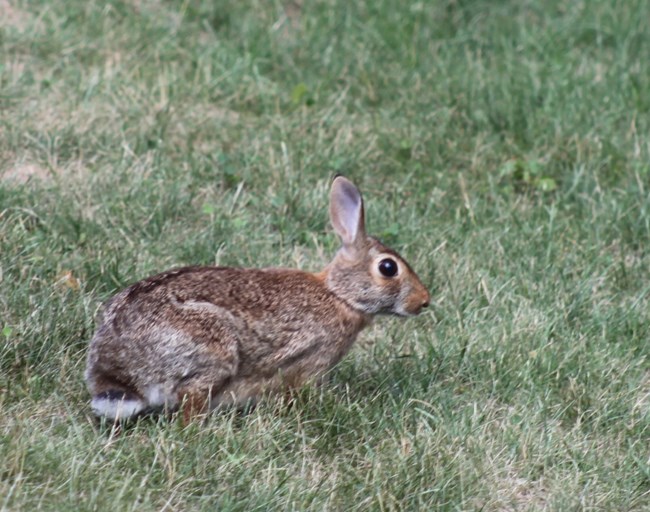
Originating in other parts of North America, settlers introduced the Eastern cottontail to new England before 1900. The Eastern cottontail uses many of the same resources and habitats as the New England - which is native to North America. The two species, therefore, have to compete for survival. As a result of this competition, the New England cottontail's numbers have been steadily declining as the Eastern variant's population explodes. Now, the Eastern cottontail is the most common rabbit in Massachusetts. New England cottontails are reluctant to leave the cover of thickets and brush. Eastern cottontails, on the other hand, venture further into open spaces like yards and parks. This opens new food supplies and lessens the impact of habitat loss. The favorite foods of New England cottontails grow on forest floors (goldenrod, chickweed, buttercups, wild strawberries, etc.), and in the winter they eat bark and twigs to get by. Dense forests block out the sun and prevent vegetation growth, though. Massachusetts's forests are getting older, and so food for these cottontails is becoming scarce. Both species are incredibly important for the ecosystem, as they provide a food source for many predators (e.g. foxes, minks, raccoons, snakes, birds of prey, etc.). They are active year round, and do not hibernate. Mostly silent, they are known to let out a high-pitched scream when caught by a predator to startle it and alert other nearby rabbits. |
Last updated: September 26, 2020
